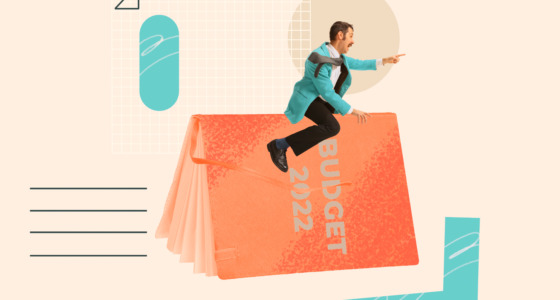

Many homeowners find refinancing opportunities appealing as they can take advantage of new interest rates and better deals. This article examines the concept of refinancing, including its advantages and disadvantages, as well as how it works.
What Does Refinance Mean?
Refinancing, also referred to as “refi,” involves obtaining a new loan to repay an existing one. The new loan may have different terms compared to the original loan, such as a different interest rate, loan amount, or repayment period.
Borrowers often choose to refinance to consolidate multiple debts into a single payment or to access additional cash. Common types of loans that are refinanced include credit cards, car loans, mortgage loans, student loans, and small business loans.
To illustrate the meaning of refinancing with an example, let’s assume you have a $10,000 loan with an interest rate of 6%. If you refinance with a new loan that has an interest rate of 4%, you could save $200 per year in interest payments. Moreover, if you refinance to a shorter loan term, you could save even more money in interest payments.
Hopefully, the above example clarifies the question, “What does refinancing a loan mean?”
How Refinancing Works
When you refinance, your lender will pay off the old loan when the new one becomes due. This will leave you with the latest loan, for which you will use the new interest rates and monthly principal for payments.
If you find a new lender offering better terms than your current one, you can refinance with them. Alternatively, you may choose to refinance with your current lender if you are satisfied with their terms.
Refinancing requires going through the loan application process again. To refinance your mortgage, you will likely need to meet certain minimum requirements. These may include a favorable debt-to-income ratio, a good credit score, sufficient home equity, and a positive standing with the loan you are refinancing.
Additionally, lenders will typically want proof that you have paid off other debts, such as car loans or personal loans, over the past few years. Comparing offers from multiple lenders will help you determine if you qualify for different types of refinancing. It will also provide a clearer understanding of which lender is the best fit for your current situation.
Types of Refinancing
There are various types of refinancing available to borrowers, each with its own advantages and disadvantages. It is crucial to select the right type that suits your needs.
- Rate-and-term refinancing: This type replaces your existing loan with a new one that may offer a lower interest rate and/or different loan terms. Rate-and-term refinancing is the most common type.
- Cash-out refinancing: With this type, you can access the equity you’ve built up in your home. By taking out a new loan that exceeds your current loan balance, you can receive cash. For example, if your current mortgage is $300,000 and you want $30,000 in cash when refinancing, a cash-out refinancing would increase your mortgage to $330,000. Successfully completing the process would provide you with $30,000, which is tax-free.
- Cash-in refinancing: In cash-in refinancing, the borrower pays a certain amount of money during refinancing to reduce the loan amount. Consequently, the new loan may come with a lower interest rate and a shorter repayment period.
- Consolidation refinancing: This type allows you to merge multiple loans into a new loan with a lower interest rate.
- Streamline refinancing: Streamline refinancing is available to those with government-backed loans, such as Federal Housing Administration (FHA) loans. It helps homeowners reduce interest rates and monthly payments.

Pros and Cons of Refinancing
Refinancing is a significant decision that should not be taken lightly. It has both advantages and disadvantages, so it is essential to carefully consider the pros and cons before making a decision. Here are some factors to consider:
Benefits of Refinancing
1. Reducing Monthly Payments
One of the main reasons people choose to refinance is to lower their monthly payments. If interest rates have decreased since you initially took out your mortgage, refinancing can help you secure a lower rate and save a significant amount of money each month.
2. Shorter Loan Term
Refinancing gives you the opportunity to shorten the term of your loan. For example, if you have a 30-year loan, you can refinance it to a 15, 10, or 20-year loan. While this will increase your monthly payments, it will ultimately save you money on interest in the long run.
3. Consolidate Multiple Loans
By combining multiple loans into one, you can benefit from lower interest rates. Additionally, managing just one loan from a single lender is much easier than juggling multiple loans.
4. Extending the Repayment Period
If your income has decreased and you’re struggling with high monthly payments, refinancing can help by extending the length of your loan. However, it’s important to note that this may result in paying more interest over the long term.
5. Switching from Adjustable Interest Rate to Fixed Interest Rate
Adjustable interest rates can be unpredictable as they can fluctuate without notice. By refinancing to a fixed interest rate, you can secure a more stable rate, potentially leading to lower interest rates in the long run. Keep in mind that there may be charges for breaking the existing contract.
6. Making Adjustments to the Current Contract
Refinancing gives you the opportunity to update the details in your contract. For example, you can add or remove co-borrowers or cosigners, such as a spouse.
Drawbacks of Refinancing
While refinancing offers numerous advantages, there are also some potential drawbacks to consider:
1. Paying More in Interest over the Long Term
While refinancing can provide a lower interest rate, extending the loan term may result in paying more interest overall. It’s crucial to carefully evaluate how a lower interest rate will impact your overall financial picture before deciding to refinance.
2. Refinancing Fees
Refinancing comes with closing costs, which include origination fees, appraisal fees, inspection fees, and attorney fees. Depending on the lender, these fees can amount to 3% to 6% of the new loan amount.
3. Impact on Credit Score
When you apply for a refinancing loan, the lender will conduct a hard inquiry on your credit record. This can cause a slight decrease in your credit score by a few points.
4. Lenders’ Mortgage Insurance
If you have less than 20% equity in your home, refinancing may require you to pay lenders’ mortgage insurance (LMI) to the new lender. This additional cost can offset some of the savings you were hoping to achieve through refinancing.
How to Refinance?
Follow these steps to make the refinancing process smooth and secure the best offer:
1. Check Your Credit Score
To obtain the best deal, ensure your credit score is impressive. Different lenders and loan types have varying requirements, but a good score will help you secure lower interest rates. Additionally, a high score increases the likelihood of lenders approving your loan.
2. Prepare Necessary Documents
After confirming your good credit score, gather other required documents that your potential lender may need. This will depend on the type of loan you’re applying for. If you’re refinancing your mortgage, determine your home’s equity. Having at least 20% equity is advantageous as it may exempt you from paying LMI. Additionally, ensure you have verifiable income and a low debt-to-income ratio.
3. Conduct Thorough Research
Now that you have most of the requirements in order, conduct thorough research. Shop around and obtain quotes from multiple lenders to find the best refinance rates. Compare rates, fees, and terms to secure the most favorable deal.
Additionally, don’t forget to request an offer from your current lender. If their offer is better than others, you may save on some costs, although it’s likely that new lenders will provide lower rates.
4. Prepare Your Documents
You may need to gather documents such as tax returns, pay stubs, and bank statements. These will be used to verify your income and assets.
5. Complete the Loan Application
Next, fill out the loan application. This process is similar to when you applied for your original mortgage. Undergo a credit check and provide information about your employment and finances. Your lender will be interested in your net worth, so it’s important to disclose all relevant information upfront to streamline the process.
6. Prepare for the Appraisal
In most cases, lenders will require a home appraisal to determine the value of your property. Be prepared to cover the associated costs.
7. Close the Loan
The final step is to settle the closing fees. It’s important to note that with certain lenders, you have the option to include the closing costs in the loan amount. However, this means that you will be charged interest on these costs, which will slightly increase the interest rate.
Is Refinancing Right for You?
Refinancing your loan can be a great way to save money. By obtaining a lower interest rate, you can reduce your monthly payments and pay off your loan more quickly. Additionally, refinancing allows you to tap into your home’s equity and receive cash for home improvements or other expenses.
However, refinancing is not suitable for everyone. It is crucial to carefully evaluate your financial situation before deciding to refinance your mortgage.
Here are some signs that refinancing may not be the best option for you:
- You are unable to secure lower interest rates.
- Affording the refinancing costs would be a challenge.
- The break-even period for recouping the costs is too long.
- It does not result in a shorter loan term.
How Long Does the Refinancing Process Take?
The duration of the refinancing process can vary from 30 to 40 days. However, the exact timeline depends on the lender you select and the type of loan you are seeking. To determine an accurate timeframe based on your specific circumstances, it is advisable to consult with your lender.
What Does Refinancing a Loan Mean?
Refinancing a loan involves replacing your current loan with a new one. The new loan will have different terms and conditions compared to your existing loan, potentially offering a lower interest rate, monthly payment, or an altered repayment schedule.
What Does Refinancing a Home Entail?
Refinancing a home entails obtaining a new loan to replace your current mortgage. Similar to other refinancing options, this process offers several benefits, such as reducing monthly payments, accessing equity, and consolidating debt. Moreover, refinancing can be used to shorten the loan term or secure a lower interest rate.











